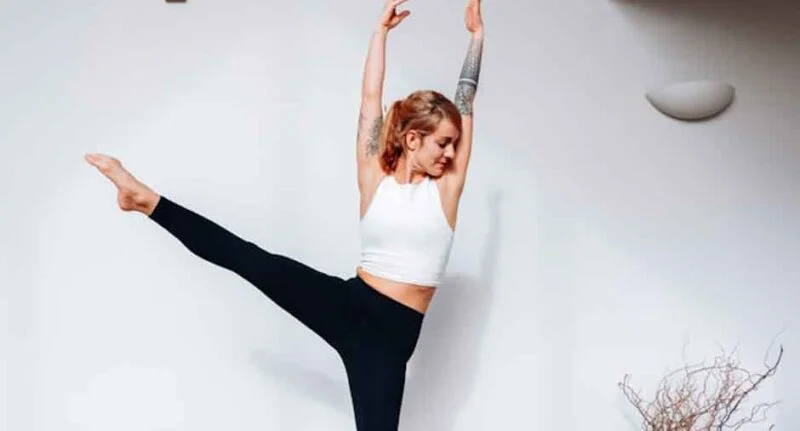
Taking up yoga at home may be a very fulfilling experience that has many mental, emotional, and physical advantages. By taking the appropriate steps, you can develop a rewarding practice that easily integrates into your daily routine. The following six comprehensive pointers will assist you in starting your yoga practice in the convenience of your own home.
Establish A Specialized Yoga Area
Having a separate yoga area can greatly improve your practice since it creates a calm and focused atmosphere. This area just needs to be a tiny corner big enough to fit your mat and allow for some movement; it doesn’t have to be very big. This contributes to a feeling of calm and concentration. For stability and comfort, include a yoga mat. To make the room feel cozier, think about adding a few unique accents like a plant, a diffuser filled with essential oils, or a tiny shelf holding candles. Your practice can be more enjoyable with proper lighting and ventilation. Pick a room that gets plenty of natural light or soft, adjustable lighting if at all feasible, and make sure it has good ventilation.
Start With Beginner-Friendly Routines
To get started with yoga, it is essential to begin with routines that are specifically created for people who are just starting. Through the use of this strategy, you can construct a strong foundation while avoiding feeling overwhelmed. You can look for yoga classes or applications that offer basic courses that are offered online. These days, you can find online platforms that provide a personalized yoga challenge for beginners that are either free or reasonably priced and are geared toward newbies. You can get a good start by watching YouTube or by downloading an app like Daily Yoga. Instructors can help you can concentrate on learning foundational postures, including Child’s Pose, Warrior I, and Downward Dog. Building strength, flexibility, and balance. They start with shorter workouts that last between 15 and 20 minutes. By doing so, you will be able to gradually build up your stamina and confidence without experiencing feelings of stress.
Focus On Proper Technique
When practicing yoga, it is essential to have a correct technique in order to avoid injuries and to be certain that you are getting the most out of your practice. Emphasize proper alignment, breathing, and transitioning between poses seamlessly. Follow along with videos provided by knowledgeable teachers who are able to illustrate the ideal alignment and provide advice on how to make adjustments. Props such as yoga blocks, straps, and bolsters can help you achieve proper alignment and make certain poses easier to execute.
Establish A Consistent Routine
If you want to make progress in yoga, consistency is necessary. By establishing a routine, you can more easily incorporate yoga into your everyday life and strengthen the habit of doing yoga on a consistent basis. Find a time that is most convenient for you, whether it be in the morning to get your day off to a good start or in the evening to relax and unwind. It is easier to form a habit when the timing is consistent.
To begin, set goals that are within your reach, such as practicing three times a week, and as you feel more comfortable, progressively increase the frequency of your practice sessions. Maintaining a yoga notebook allows you to document your sessions of practice, your reflections, and any changes in your physical or emotional state that you observe.
Pay Attention To Your Physical Health
Your yoga practice can be tailored to your requirements and constraints because it is a personal discipline. In order to have a great experience, it is critically important to pay attention to how your body feels both during and after the exercise. It is not worth it to force oneself into discomfort or pain. You can adjust your stances or take breaks as necessary. In order to make positions more approachable, you can use modifications or props. For example, if you are unable to reach the floor, you can use a block to hold your hands while you are performing forward bends. Acknowledge the times when you need to take a break or skip a position.
Explore Different Yoga Styles
There are numerous kinds of yoga, each of which has its area of emphasis and set of advantages. By experimenting with a variety of approaches, you might find the one that caters to your preferences and objectives the most effectively. Hatha, which is soothing and slow-paced; Vinyasa, which is flowing and energetic; and deeply calming Restorative, are some of the types that you can experiment with. Numerous online resources provide introductory classes in a variety of formats. You can pay attention to how different approaches affect your physical and mental state. You may find that certain designs invigorate you, while others may assist you in relaxing and unwinding. Pick out workout types and routines that are in line with your present level of physical fitness, emotional condition, and personal objectives.
Conclusion
Deciding to begin your yoga journey at home gives you the flexibility to practice at your speed and according to your terms. Building a meaningful and sustained yoga practice can be accomplished by establishing a dedicated space, beginning with beginner routines, concentrating on correct technique, developing a routine, listening to your body, and exploring different forms of yoga. Embrace the process with patience and openness, and take pleasure in the life-altering advantages that yoga has the potential to bring about.

